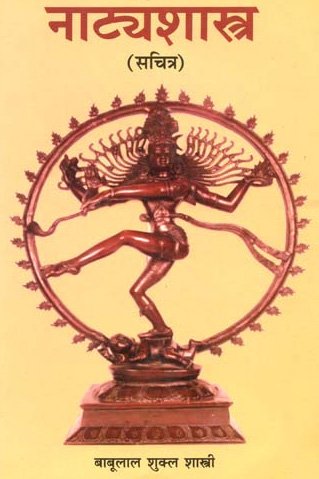Sucividdha, Sūcīviddha, Suci-viddha, Sūcividdha: 4 definitions
Introduction:
Sucividdha means something in Hinduism, Sanskrit. If you want to know the exact meaning, history, etymology or English translation of this term then check out the descriptions on this page. Add your comment or reference to a book if you want to contribute to this summary article.
Alternative spellings of this word include Suchividdha.
In Hinduism
Natyashastra (theatrics and dramaturgy)
Source: Wisdom Library: Nāṭya-śāstra1) Sūcīviddha (सूचीविद्ध).—One of the 108 karaṇas (minor dance movement) mentioned in the Nāṭyaśāstra chapter 4. The instructions for this sūcīviddha-karaṇa is as follows, “one foot of Sūcī Cārī being put on the heel of another foot, the two hands to be respectively put on the waist and the chest.”.
2) Sūcīviddha (सूचीविद्ध).—One of the 32 aṅgahāras (major dance movement) mentioned in the Nāṭyaśāstra chapter 4. The instructions for this sūcīviddha-aṅgahāra is as follows, “after showing Alapallava (Alapadma) and Sūcī (-mukha) gestures assuming one after another Vikṣipta. Āvartita, Nikuṭṭaka, Ūrūdvṛtta, Āksipta, Uromaṇḍala, Karihasta, and Kaṭicchinna Karaṇas.”.
A karaṇa represents a minor dance movements and combines sthāna (standing position), cārī (foot and leg movement) and nṛttahasta (hands in dancing position). A sequence of multiple karaṇas combine into an aṅgahara (major dance movement).
3) Sūcividdha (सूचिविद्ध) also refers to one of the twenty maṇḍalas, according to the Nāṭyaśāstra chapter 12. The Sūcividdha-maṇḍala is classified as a ākāśa, or “aerial”, of which there are ten in total. A maṇḍala is a combination of cārīs (“dance-steps”), which refers refers to the simultaneous movement of the feet (pāda), shanks (jaṅghā) and the hip (ūru). From these cārīs proceed dance as well as movements in general.
Source: archive.org: The mirror of gesture (abhinaya-darpana)Sūci-viddha is one of the saṃyutta-hastāni (Twenty-seven combined Hands).
Source: archive.org: Natya ShastraSūcīviddha (सूचीविद्ध).—A type of maṇḍala (series of cārīs) classified as aerial (ākāśa);—Instructions:
Source: Shodhganga: Elements of Art and Architecture in the Trtiyakhanda of the Visnudharmottarapurana (natya)1) The left foot [to be moved] in the sūcī and the bhramarī-cārīs (the latter by turning the trika round),
2) The right foot in the pārśvakrāntā-cārī, the left foot in the ātikrāntā-cārī,
3) The right foot in the sūcī, the left foot in the apakrāntā-cārī and the right foot again in the pārśvakrāntā-cārī.
Sūcīviddha (सूचीविद्ध) [mentioned twice] refers to one of the 108 kinds of Karaṇa (“coordination of precise movements of legs and hands”), according to the Viṣṇudharmottarapurāṇa, an ancient Sanskrit text which (being encyclopedic in nature) deals with a variety of cultural topics such as arts, architecture, music, grammar and astronomy.—According to the Viṣṇudharmottarapurāṇa, karaṇas are the coordination of precise movements of legs and hands performed in a particular posture. The Nāṭyaśāstra also gives its view point in the same spirit. In the Viṣṇudharmottarapurāṇa, one hundred and eight kinds of karaṇas are accepted, e.g., Sūcīviddha.

Natyashastra (नाट्यशास्त्र, nāṭyaśāstra) refers to both the ancient Indian tradition (shastra) of performing arts, (natya—theatrics, drama, dance, music), as well as the name of a Sanskrit work dealing with these subjects. It also teaches the rules for composing Dramatic plays (nataka), construction and performance of Theater, and Poetic works (kavya).
See also (Relevant definitions)
Partial matches: Viddha, Shuci.
Full-text: Angahara, Samyutta-hastani, Apaviddha, Mandala, Bhramara.
Relevant text
Search found 6 books and stories containing Sucividdha, Sūcīviddha, Suci-viddha, Sūcividdha, Sūci-viddha, Sūcī-viddha; (plurals include: Sucividdhas, Sūcīviddhas, viddhas, Sūcividdhas). You can also click to the full overview containing English textual excerpts. Below are direct links for the most relevant articles:
Abhinaya-darpana (English) (by Ananda Coomaraswamy)
Vishnudharmottara Purana (Art and Architecture) (by Bhagyashree Sarma)
2.5. Karaṇa (movements of legs and hands) < [Chapter 3 - Drama and Dance]
Natyashastra (English) (by Bharata-muni)
The Skanda Purana (by G. V. Tagare)
Chapter 3 - Ḍhuṇḍheśvara (ḍhuṇḍha-īśvara-liṅga) < [Section 2 - Caturaśīti-liṅga-māhātmya]
Gati in Theory and Practice (by Dr. Sujatha Mohan)
Gaits relevant for sentiments < [Chapter 2 - Concept and technique of Gati]
Description of Gati as in Viṣṇudharmottarapurāṇa < [Chapter 2 - Concept and technique of Gati]
Gaits pertaining to conditions < [Chapter 2 - Concept and technique of Gati]
The Religion and Philosophy of Tevaram (Thevaram) (by M. A. Dorai Rangaswamy)
Chapter 4.3 - (c) Sculptures of Shiva and Dance < [Volume 2 - Nampi Arurar and Mythology]